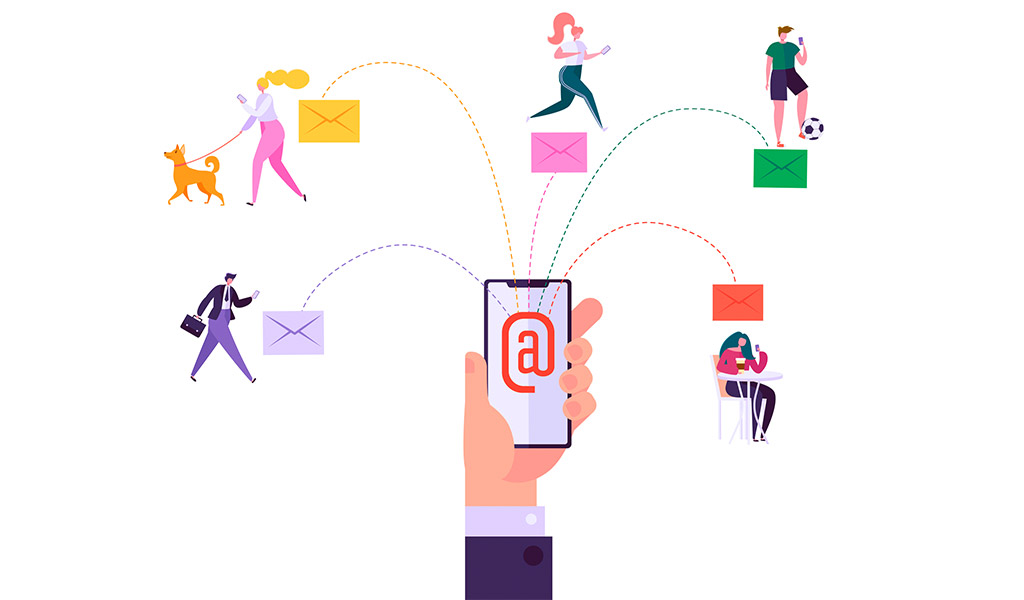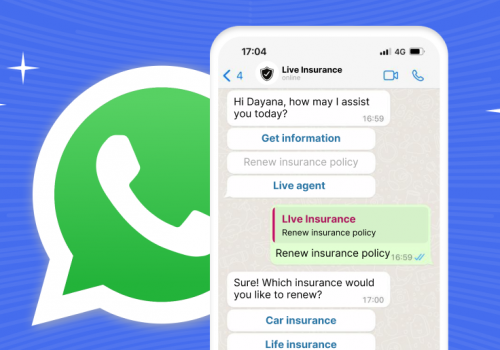Customer Service Emails. As a customer service department, the way you deal with your valued customer’s email inquiries could stand to make or break your company’s reputation. If not done to the standards that today’s ever more busy and demanding customers expect, you could be looking at an exodus of your customers straight to your competitors.
So how can you deliver more personal, better-written emails that nail your customer’s inquiries and issues, while also being productive and reigning in costs?
In this article, we’re going to look at 4 best practices to write customer service emails that will actually work. From composing to delivering.
Before we get into the nuts and bolts of this topic, let’s start by looking at the brief answer as to how you can produce great customer effective customer service emails.
What are some best practices for writing customer service emails that actually work? When writing customer service emails, it’s important to make sure you treat your customers personally, keep your language simple to understand, don’t ask for them to repeat themselves, address the customer’s emotions and importantly, know when to abandon email and pick up the phone.
One of the biggest challenges of customer service departments in dealing with email responses. Most will have a huge amount of emails received by the minute of every hour which needs a direct response. Customer agents KPI’s are getting more stringent and demanding by the minute as we surge forward into a more technological world.
Many customer service departments are focusing more and more on Artificial Intelligence such as customer chat, quick messaging services and other instant forms of communicating with their valuable customers.
So if your team is tasked with the task of sifting through the barrage of unhappy customers sitting in email boxes, it can seem like a daunting, not to mention the costly process
Now we’ve given you a taster of some of the ways we think will get your customer service email departments winning, let’s start by looking at what kind of customer service is expected by today’s more discerning consumer.
This will help us more easily understand what their expectations are and begin to create a picture of how we can best help them by creating a great customer service email strategy.
What do your customers want from customer service?
It’s no surprise that your customer service department has the power to send you to the dizzy heights of uber customer satisfaction, or critically can send your customer leaving your checkout carts by the droves.
According to a recent survey by Forbes, out of 1,000 consumers who were asked to give their opinions on the importance of customer service, a huge 92% of them declared they would stop buying from any company after the maximum of three times.
More worryingly, over a quarter said they would head for the door after just one unhappy experience. So from this evidence, it’s not difficult to conclude that if your customer service offering isn’t up to expectations then your company could stand to face a very bleak future.
So, let’s take a closer look at some specifics that customers require from your departments in order to help us try to build a picture of the kinds of email responses and experience they will be looking for.

What do customers expect?
Let’s start with one of the most important factors that people need businesses to get straight, in order to trust them and continue to buy from them.
- Consistent Answers According to the above report one of the chief no-no’s from the customer is when they receive conflicting answers to their questions. It appears that over three-quarters of those who took part in the survey cited a loss of confidence and trust in the company, along with the obvious confusion it causes.
Some say that it’s not unusual for customers to try a different support agent or channel to get the answer they are looking for. This most certainly shows how important it is, to make sure all responses from every channel, including email, live chat and messaging is consistent.
- Personalized Service A huge 60 percent of those surveyed in the report mentioned previously indicate the importance of a personal response. Historically, customers were more interested in speed of response, but the idea that they are simply a ‘case number’ is very off-putting to a large number of consumers.
It appears that being treated as an individual person with their own set of circumstances was more important than simply how quickly they received a response. So customer service departments who are looking for efficiency in terms of speed along with personalization are looking at the best kind of combination to retain happy customers.
- One time only another major situation for those who are contacting customer service departments by either email or other ways. Is the fact they become immensely frustrated having to repeat themselves. It seems the action of constantly repeating themselves is not how they want to be communicated with.
It seems that if customers have asked a question on one platform and then moved into another. Such as email, they are looking for the agent to solve their problem without asking them to repeat their issue or question. Customers don’t expect repeat performances at every touchpoint.
So now we’ve looked a little more closely at the kind of service your customers are expecting from you, let’s drill down a little more into their expectations.
4 great tips to improve customer service emails
Let’s look below at some great tips specifically regarding emails. This will help you get some useful insights into the way you can deliver the best email service and will keep your customers returning after time.
To start things off, let’s first look at possibly one of the most important elements to include in your strategy, which is to make sure your customer service agents are keeping it personal.
Up close and personal.
So, you can assure your customers that you are communicating with them personally and they are not simply a call log number, personalization is crucial.
Although you need to strike the balance between speed and effective responses by using a template, it’s important to feel their interaction is with a real live person and not a bot.
- Use the customer’s name So that a customer has a much more personal connection with you, make sure you use their name at the beginning and then remember to sign off your email with their name.
- Use a friendly tone When addressing your customer, always go a tone friendlier, while making sure you are respecting their boundaries. This will help to gain their trust and create a better environment for them to discuss their problem or issue. It will also help to diffuse any anger they might feel.
- Build their trust by giving your customer a one-to-one personalized experience, it will not only build trust in the agent but also in the company as a whole.
Simple is best
Although it’s important not to underestimate or patronize your customers on email, it is important to consider the kind of language you use. If your industry is pretty heavy on jargon, then it’s best to try to limit it where at all possible.
Also, think carefully about any internal acronyms or any ‘agent speak’ you might be tempted to use. Your customer will not understand and it may simply just add a layer of aggravation on the issue from their perspective.
Although of course, you work with your products and services daily, your customers won’t have the knowledge you have. It’s always best to use simple, non-technical language on emails to customers.
By keeping your language clear and simple, you can make sure that your customers avoid any kind of misunderstanding. Keeping it simple can also minimize the number of emails backward and forwards between you and the customer in order to understand technical or industry jargon.
It’s a good idea from time to time, to check some of your responses with a coworker to get another opinion. This way you can make sure you give clear, concise and useful information.
The key takeaway is that you need to ensure that anyone would be able to understand your response, including anyone who doesn’t have a complex knowledge of the product or service offered.
“By keeping your language clear and simple, you can make sure that your customers avoid any kind of misunderstanding.”

Address how your customer feels
When your customers are clearly using language, which shows they are distressed, such as anger or frustration, make sure you acknowledge their feelings. However it may seem like a small issue to you, it could be causing them anxiety or enough to make them stop doing business with you altogether.
Although some customers will seem calm and composed, it’s perfectly natural that some customers won’t feel like this, because their expectations haven’t been met. You are quite likely to see a vast number of emails that will be written while customers are experiencing a range of emotions.
Become an expert in picking up on emotion. If you head a team of customer service agents, maybe offer some ‘EQ’ training. If you are an agent, brush up on empathy skills so you can really understand what your customer’s feelings are, which will ultimately give you a much better chance of fulfilling their needs as efficiently as possible.
Make sure that once you pick up on their emotion, you reflect it back to them to show you understand. Using language such ‘that must be difficult for you right now’ or ‘I can understand that would make you feel angry.’
Also, make sure you say that you’re sorry for how they’re feeling – even if there’s nothing you can do to help. This helps your customers to realize that you understand them better, empathy is a powerful tool …which may make the difference between a continued customer, or an ex-customer.
So, let’s finish our 4 great tips on a strategy which can be a customer service agent’s best friend. We’ll take a look below at when it’s best to simply just not email!
Learn when not to email
It can sometimes be quite draining for both the customer service agent and for the customer to engage in lengthy email swaps. It can sometimes be that a problem has been lingering too long without a resolution if continued over email will most likely have a negative effect – for both parties.
In situations where this seems to be the case, it’s important to know when to quit for the sake of both parties! At the point where the email conversation is just not getting anywhere, it might be the time to use a different method of communication, such as the telephone.
A telephone call may easily clear up any confusion on both sides and a ‘human’ touch can go a long way in diffusing negative situations that might happen if you simply continue with back and forth emails.
So once receiving an email from a customer after a long haul email tennis match you could try responding to the customer with:
‘Hi, I’ve just received your email. Thank you for that. I thought it would be easier for you if we resolved this by telephone. If you can send across a telephone number and let me know when it’s a good time to call, I’ll be happy to do what I can to help.’
And to finish on…
The customer service industry can be one of the most challenging yet most rewarding jobs. It’s important when emailing customers that you are giving them the best experience you can.
By making sure you represent the business you work for with some great customer service best email practices you will make sure you consistently communicate the right message, go that extra mile to keep your customers happy and ensure you keep their valued custom!
Why not incorporate email into an overall platform management system. CommBox is a modular platform that enables you to combine all your customer communication channels to make communicating with your clients even easier, contact us now for more information.




















